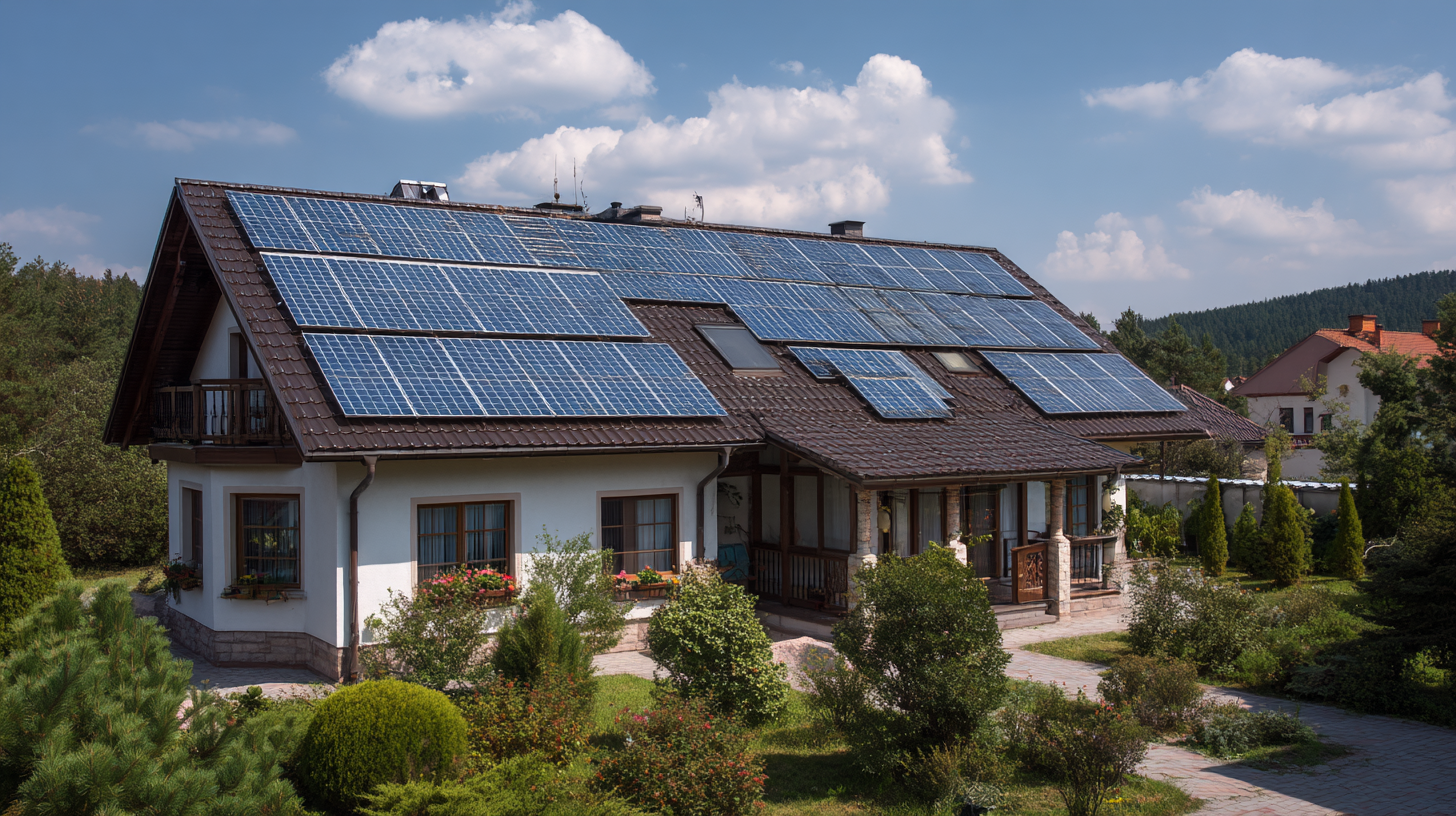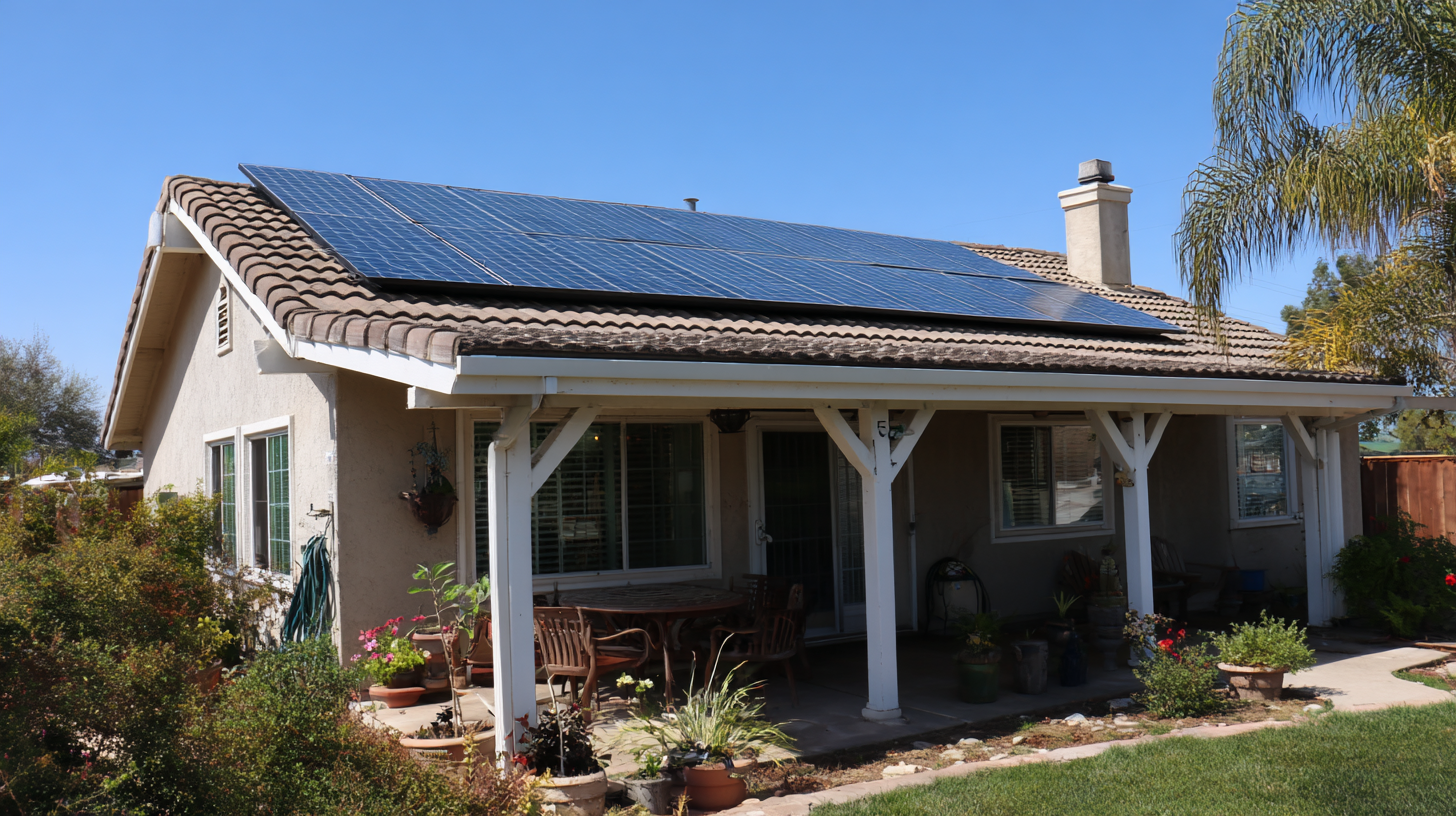Ultimate Guide to Maximizing Energy Efficiency with Solar Thermal Panels in Your Home
As homeowners increasingly seek sustainable and cost-effective solutions to reduce energy consumption, solar thermal panels have emerged as a leading technology in enhancing energy efficiency. According to the U.S. Department of Energy, solar thermal systems can provide up to 50-80% of a household's hot water needs, significantly lowering utility bills and carbon footprints. Additionally, a report from the Solar Energy Industries Association (SEIA) highlights that the use of solar thermal technology can lead to substantial energy savings of approximately $300 annually for an average household.

With advancements in design and efficiency, modern solar thermal panels not only optimize energy use but also integrate seamlessly into residential settings. In this ultimate guide, we will explore the best strategies for maximizing the performance of solar thermal panels in your home, ensuring that you harness their full potential for energy efficiency.
Understanding Solar Thermal Panels: How They Work and Their Benefits
Solar thermal panels are an innovative solution for harnessing the sun's energy to heat water for residential use. Unlike photovoltaic solar panels that convert sunlight directly into electricity, solar thermal systems utilize the sun's heat to warm up a special liquid, which then heats water in a storage tank. According to the U.S. Department of Energy, solar thermal technology can provide up to 70% of a household's hot water needs, offering a significant reduction in energy costs and reliance on traditional energy sources.
The advantages of solar thermal panels extend beyond cost savings. Homes equipped with solar thermal systems can experience a reduction in greenhouse gas emissions, enhancing their sustainability. A report by the International Renewable Energy Agency (IRENA) indicates that over 95% of the energy generated from solar thermal installations is renewable, contributing to a cleaner environment. Additionally, advancements in technology have improved the efficiency of these systems, with modern panels achieving efficiency rates of up to 80%. This makes solar thermal energy an attractive option for homeowners aiming to maximize energy efficiency and embrace sustainable living practices.
Assessing Your Home's Energy Needs for Solar Thermal Efficiency
When considering solar thermal panels for your home, the first step is to assess your household's energy needs. Understanding your energy consumption patterns will help you determine the optimal size and type of solar thermal system required to meet your needs. Start by reviewing your utility bills from the past year to identify your monthly energy usage and peak times. This information is crucial as it will guide you in setting goals for energy savings and efficiency, allowing you to tailor your solar thermal installation for maximum impact.
Next, consider factors such as the size of your household, the number of occupants, and specific hot water requirements, such as bathing, laundry, and dishwashing. Additionally, evaluating your home's insulation and energy efficiency can reveal areas where heat loss occurs, potentially impacting your solar thermal system's effectiveness. By conducting an energy audit, you'll not only gain insights into your current energy needs but also identify opportunities for improvement. This focus on assessment ensures that your investment in solar thermal energy is both effective and sustainable, leading to long-term energy savings and a smaller carbon footprint.
Energy Efficiency Assessment with Solar Thermal Panels
This chart displays the energy consumption in kWh for different uses in a typical home equipped with solar thermal panels. Understanding how energy is utilized can help maximize efficiency and reduce overall energy costs.
Installation Process: Key Steps to Setting Up Solar Thermal Panels
The installation of solar thermal panels is a transformative step towards enhancing energy efficiency in your home. The process begins with a thorough site assessment, where professionals evaluate your roof's orientation, shading, and structural integrity. According to the U.S. Department of Energy, homes with optimal solar exposure can see an energy efficiency increase of up to 30%, making this initial assessment critical in determining the best setup for your needs.
Once the assessment is complete, the installation proceeds with mounting the panels securely to the roof, ensuring they can withstand local weather conditions. This typically involves using a bracket system tailored to your specific roof type. Following installation, a closed-loop system is installed, which works by circulating a heat-transfer fluid through the panels and into a storage tank. According to a report from the International Energy Agency, solar thermal technology can provide up to 70% of your hot water needs, significantly lowering your reliance on conventional energy sources. This strategic process not only maximizes energy efficiency but also enhances the overall sustainability of your home.

Maintaining Solar Thermal Systems for Optimal Performance
Maintaining solar thermal systems is crucial for ensuring
optimal performance and
maximizing energy efficiency in your home. Regular maintenance not only extends the lifespan of these systems but also enhances their effectiveness, potentially reducing energy costs by up to 30%. According to the Solar Energy Industries Association (SEIA), well-managed solar thermal installations can yield an average annual energy output increase of 10-15%, particularly when they are cleaned and inspected routinely.
Key maintenance practices include checking fluid levels, inspecting and cleaning collectors, and ensuring proper insulation. For instance, a report by the International Renewable Energy Agency (IRENA) indicated that neglecting these fundamental maintenance tasks could lead to a decrease in system efficiency by over 20% in just a few years. Furthermore, homeowners should invest in professional servicing every few years as it can significantly contribute to maintaining system health, ensuring that solar thermal systems continue to operate at their peak efficiency while maximizing the investment made in renewable energy technology.

Cost Analysis: Budgeting and Long-Term Savings with Solar Thermal Energy
When considering solar thermal panels for residential energy efficiency, a thorough cost analysis is essential. As recent studies reveal, integrating solar energy into buildings not only addresses increasing natural resource consumption but also offers significant long-term financial benefits. In particular, the construction sector faces pressure to embrace sustainable practices, making solar thermal panels an attractive option for homeowners looking to reduce utility bills over time.
The declining costs of renewable energy technologies present a unique opportunity for homeowners to invest in solar solutions. With reported reductions in solar installation expenses and ongoing incentives from various regions, the initial investment in solar thermal systems is becoming more financially viable. Households could see substantial savings, potentially cutting their energy expenses considerably, which aligns with broader initiatives aimed at reducing emissions and improving sustainability. As evidence shows, sustainable upgrades in existing buildings yield favorable return on investment, positioning solar thermal panels as a key player in our shift toward renewable energy sources.
Ultimate Guide to Maximizing Energy Efficiency with Solar Thermal Panels in Your Home - Cost Analysis: Budgeting and Long-Term Savings with Solar Thermal Energy
| Item | Initial Cost ($) | Annual Savings ($) | Payback Period (Years) | Estimated Lifespan (Years) | Total Savings Over Lifespan ($) |
|---|---|---|---|---|---|
| Solar Thermal Panels | $5,000 | $800 | 6.25 | 20 | $16,000 |
| Installation Cost | $1,000 | N/A | N/A | N/A | N/A |
| Maintenance Cost (Annual) | $200 | N/A | N/A | N/A | N/A |
| Incentives/Tax Credits | -$1,500 | N/A | N/A | N/A | N/A |
Related Posts
-

How to Maximize Efficiency with Solar Thermal Panels in Your Home
-

What Makes Solar Panel Tiles a Smart Choice for Sustainable Energy Solutions
-

Understanding Issues with pv tiles in Modern Construction
-

Innovative Solutions for Harnessing Energy with Photovoltaic Tiles
-

Navigating Import and Export Certifications for the Best PV Tiles in the Global Market
-

Ultimate Guide to Solar PV Battery Comparisons for Global Procurement Insights